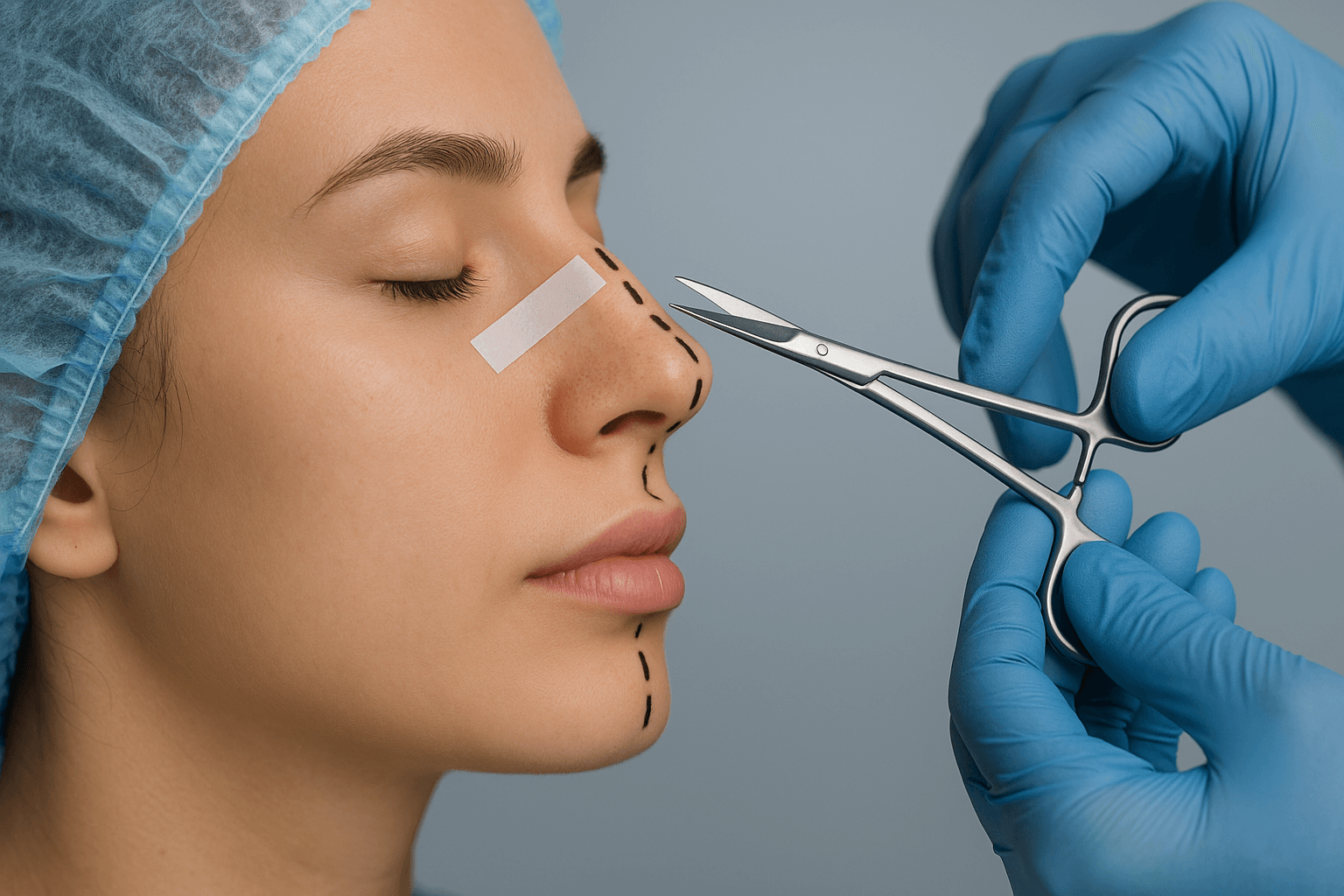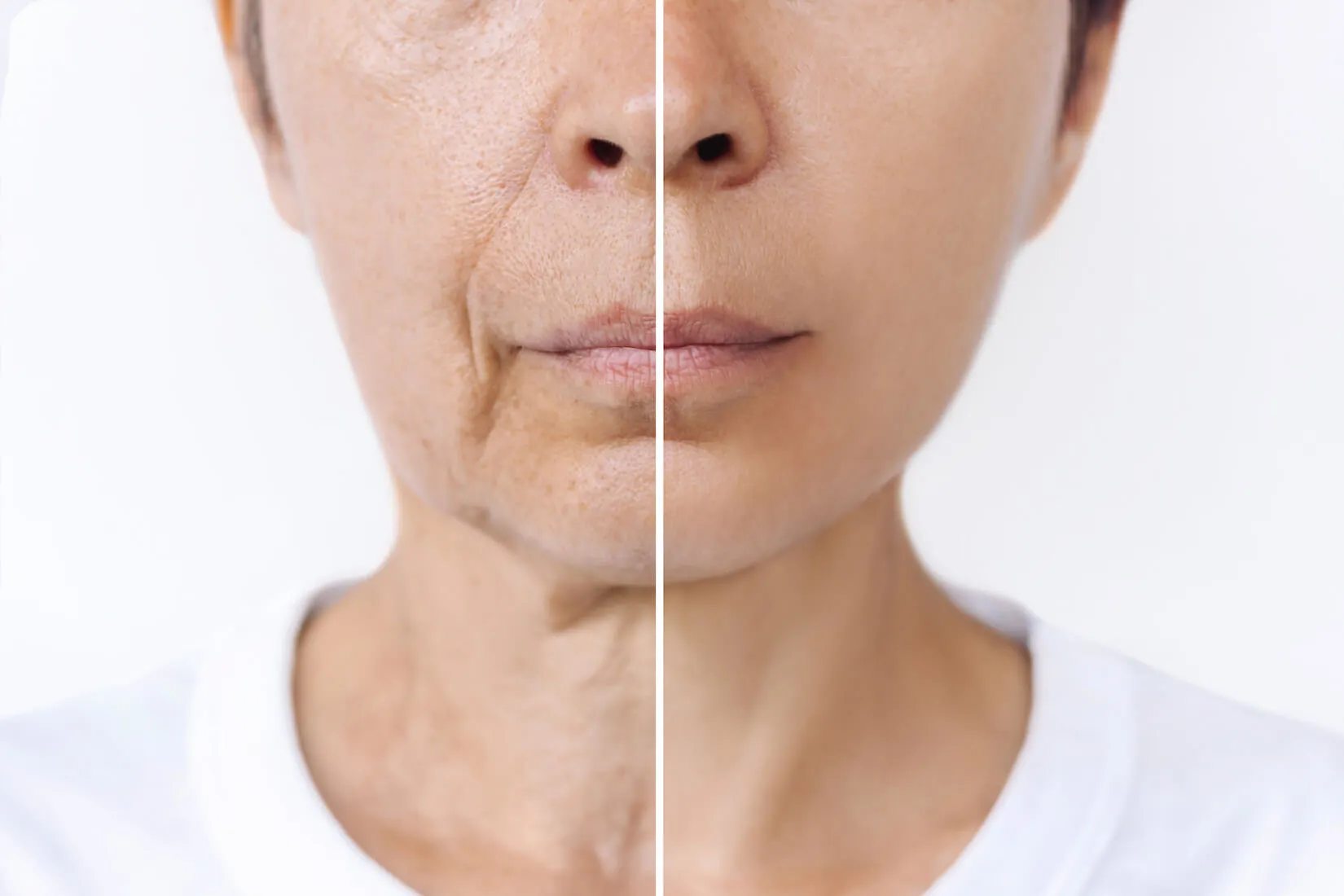Many patients are surprised to learn that there is more than one way to reshape the nose when considering rhinoplasty, commonly known as a “nose job.” While traditional or “regular” rhinoplasty has been around for decades, advances in surgical technology have introduced newer, more precise techniques like ultrasonic rhinoplasty.
So what exactly is the difference between regular and ultrasonic rhinoplasty? And why are more patients and surgeons choosing this modern method?
In this blog, we’ll break down what sets ultrasonic rhinoplasty apart, how it compares to traditional techniques, and whether it might be the right option for your nose surgery journey.
What Is Regular Rhinoplasty?
Traditional rhinoplasty is a surgical procedure used to reshape, resize, or correct the structure of the nose. It can address both cosmetic and functional concerns, such as:
- A prominent nasal hump
- A droopy or bulbous tip
- A crooked nose
- Breathing issues due to a deviated septum or internal valve collapse
In a regular rhinoplasty, the surgeon reshapes the nose using manual tools like rasps and chisels to shave or break the nasal bones. While effective, this technique requires a high degree of skill and can sometimes result in unintended trauma to surrounding tissue.
What Is Ultrasonic Rhinoplasty?
Ultrasonic rhinoplasty is an advanced nose-reshaping technique that uses high-frequency sound waves to sculpt the nasal bones with extreme precision. Instead of relying on traditional tools to cut or break the bone, surgeons use a piezoelectric device to gently vibrate and reshape the bone without damaging the surrounding soft tissue, cartilage, or blood vessels.
This technology — known as piezosurgery — has been used in orthopedic and dental procedures for years, but its application in rhinoplasty represents a major leap forward in cosmetic facial surgery.
Key Differences Between Regular and Ultrasonic Rhinoplasty
1. Precision and Control
The biggest difference between the two approaches is the level of precision. In traditional rhinoplasty, reshaping the nasal bones involves manual force, which can lead to uneven edges or microfractures that may affect the final outcome.
Ultrasonic rhinoplasty, on the other hand, allows the surgeon to reshape bone millimeter by millimeter with clean, controlled cuts. The piezoelectric device only targets bone — it does not affect soft tissues, reducing the risk of bruising and trauma.
2. Reduced Swelling and Bruising
Because ultrasonic tools don’t harm surrounding soft tissues, patients typically experience significantly less swelling and bruising compared to regular rhinoplasty. This makes the initial recovery period shorter and more comfortable for most patients.
In fact, many patients are surprised by how quickly they can return to work or social activities after ultrasonic rhinoplasty.
3. Lower Risk of Complications
Traditional rhinoplasty, while safe in the hands of an experienced surgeon, does carry a slightly higher risk of complications such as:
- Asymmetry
- Unwanted bone fractures
- Prolonged swelling
- Need for revision surgery
Ultrasonic rhinoplasty minimizes these risks by providing more refined control, leading to predictable, natural-looking results with fewer surprises during recovery.
4. Advanced Technology and Training
Ultrasonic rhinoplasty requires not only specialized equipment but also advanced training. Not all plastic surgeons offer this technique, as it involves a deeper understanding of facial anatomy and a high level of surgical finesse.
Choosing a surgeon with experience in both traditional and ultrasonic methods — like Dr. Manish Shah — ensures that you’ll get a treatment plan tailored to your unique anatomy and goals.
Is Ultrasonic Rhinoplasty Better Than Regular Rhinoplasty?
The answer depends on your needs, anatomy, and aesthetic goals.
Ultrasonic rhinoplasty may be the preferred choice if you:
- Are concerned about visible bruising or downtime
- Want a high level of precision in shaping the nasal bones
- Are undergoing your first rhinoplasty and want the most advanced approach
- Have thin skin or a delicate nasal structure that could benefit from gentler sculpting
Traditional rhinoplasty may still be suitable in certain cases, particularly when bone reshaping is minimal or if other structural concerns take precedence.
A skilled surgeon will help you determine the best technique for your situation based on a comprehensive evaluation of your nasal structure and your expectations.
What Makes Ultrasonic Rhinoplasty an Advanced Option?
Ultrasonic rhinoplasty isn’t just a trend — it’s a technological advancement that brings several enhancements to the rhinoplasty experience, both during surgery and in recovery:
- Tissue Selectivity: The piezoelectric tool only affects bone, sparing delicate blood vessels and cartilage.
- Cleaner Cuts: The bone is sculpted with surgical-level precision, eliminating the roughness caused by chiseling or rasping.
- Faster Recovery: Many patients notice they feel back to normal faster, with less bruising and post-op inflammation.
- Increased Surgeon Visibility: Because the surrounding tissue stays intact, surgeons have better visualization of the nasal framework during the procedure.
- Greater Patient Satisfaction: Improved precision often leads to more symmetrical, natural-looking results.
What to Expect During and After Ultrasonic Rhinoplasty
The process of ultrasonic rhinoplasty is similar to that of a traditional rhinoplasty, but with a few key differences in the tools and healing experience:
- Surgery Time: Typically takes between 2–3 hours
- Anesthesia: General anesthesia or deep sedation
- Recovery: Most patients can return to work or school within 7–10 days
- Bruising: Often minimal, especially around the eyes
- Results: Initial swelling resolves in a few weeks, with final results visible in 6–12 months
Your surgeon will provide detailed post-operative care instructions and follow-up appointments to monitor your progress.
Choosing the Right Surgeon Matters
Whether you opt for regular or ultrasonic rhinoplasty, the skill of your surgeon is the most important factor in achieving safe, beautiful, and long-lasting results.
Dr. Manish Shah is a board-certified plastic surgeon in Denver with extensive experience in both traditional and ultrasonic rhinoplasty. He stays at the forefront of facial aesthetic advancements and uses the latest techniques — including ultrasonic piezosurgery — to deliver refined, natural results tailored to each patient’s facial structure.
Which Rhinoplasty Technique Is Right for You?
Both regular and ultrasonic rhinoplasty can deliver transformative results — but ultrasonic rhinoplasty offers a level of precision and control that makes it one of the most advanced options available today. With less trauma, faster recovery, and reduced swelling, it’s an ideal choice for many patients seeking a smoother, more comfortable surgical experience.
If you’re considering rhinoplasty and want to explore whether ultrasonic techniques are right for your needs, schedule a consultation with Dr. Shah. As one of Denver’s most trusted rhinoplasty specialists, he can guide you through every step of your journey with expert care and honesty.







